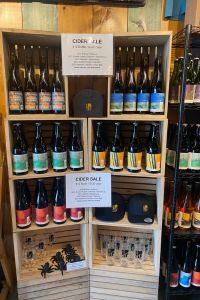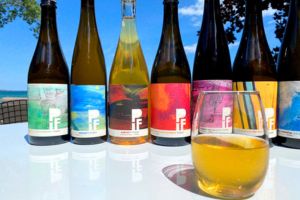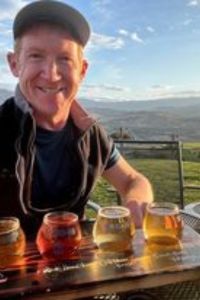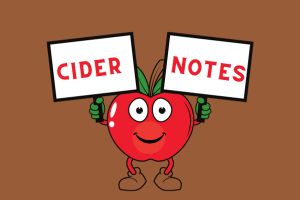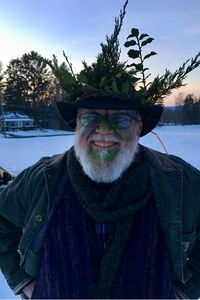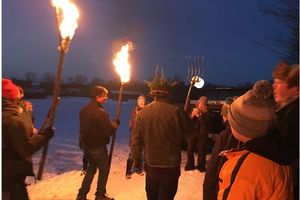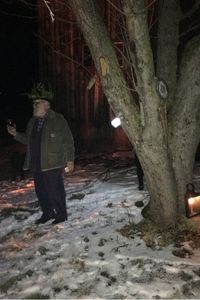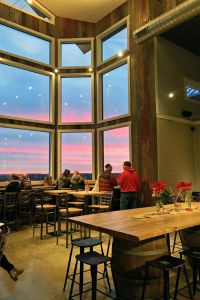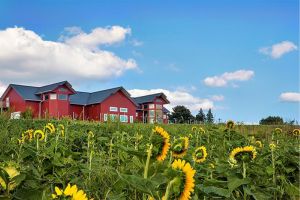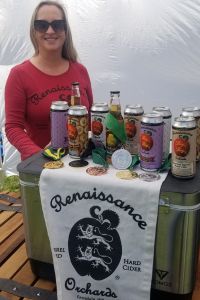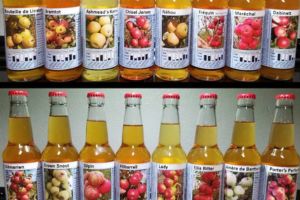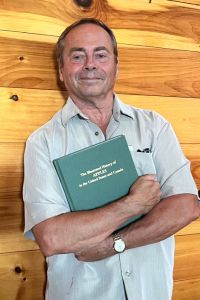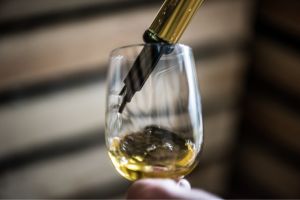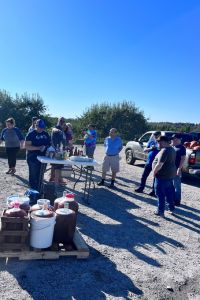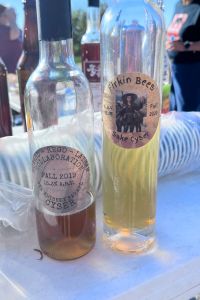The process where fresh pressed apple juice is transformed into a delightful alcoholic beverage (cider) happens during primary fermentation. Before we get into the steps here is a list of Equipment and Ingredients you will need for this stage of cidermaking.
- Fresh apple juice or cider (unpreserved)
- Yeast (wine or cider yeast recommended)
- Fermentation vessel (carboy or food-grade bucket)
- Airlock
- Sanitizer
- Racking cane or siphon
- Note book for writing down recipes and more
- Optional: metabisulfite (or campden tablets), pH test strips or pH meter, Yeast nutrient, pectic enzyme
Some of the links on this page are affiliate links. Support Cider Chat at no extra cost to you! Simply click on this link to make your Amazon purchase, and Cider Chat will receive a small commission. Thank you for your support!
- Sanitization: Cleanliness is key! Ensure all your equipment is thoroughly sanitized to prevent any unwanted bacteria from spoiling your batch. Listen to Episode 382: Beginner Tips for Squeaky Clean Cider Equipment
- Got Juice? You can press you own apples or buy juice from a cider mill. Either way the the apple varieties you choose will significantly impact your cider’s flavor. Listen to Episode 381: DIY Cider Making for Beginners
Steps for Primary Fermentation
Step 1: Start taking notes on your apple blend, make of list of the varieties, and all the steps below.
Step 2: Testing and Adjusting: Measure the specific gravity of your juice using a hydrometer. This step is crucial as it allows you to calculate the potential alcohol content.

A standard, fresh apple juice blend, without any additional sugars, usually has a specific gravity in the range of 1.045 to 1.055. This range can vary based on the apple varieties and ripeness, but for our example today, let’s work with an Original Gravity (OG) of 1.050.
Calculating Potential Alcohol By Volume (ABV) Use this simple formula to estimate the potential ABV (Alcohol by Volume). The formula is:
Potential ABV=(OG−FG)×131.25
Where FG is the Final Gravity, which for a completely fermented cider, typically falls around 1.000 to 1.010. For our example, let’s assume that all the sugars are fermented, giving us a FG of 1.000.
Potential ABV=(1.050−1.000)×131.25 = 6.56%
With an original specific gravity of 1.050 and complete fermentation, you can expect your cider to have an alcohol content of around 6.5%.
Remember, these numbers are estimates, and the actual ABV can vary based on several factors including the specific yeast strain used, fermentation temperature, and the specific blend of apples. Always use a hydrometer to get the most accurate readings throughout your cider making process
Step 3: Check the ph of your apple blend
Step 4: Add metabisulfite if using a cultured yeast. (Skip this step if your are fermenting with a wild yeast.)
Wait 24 hours after adding metabisulfite before moving to Step 5
Step 5: (optional)
- Add Pectic Enzyme: This can help break down pectin in the juice, resulting in clearer cider.
- Add Yeast Nutrient: This provides additional nutrients to help the yeast thrive.
Step 6: Pitch the Yeast
Step 7: Airlock. Add water to airlock, put into bung hole and let primary fermentation begin!
Duration of Primary Fermentation
When using a cultured yeast, the primary ferment begins within 24 hours and typically last 1-2 weeks.
When fermenting with wild yeast, the primary ferment may take longer and also last longer. The actual ferment may also appear less vigorous.
Mentions in this Chat
Mentions in this Chat
- Register now for CiderCon 2024 in Portland Oregon with pre-conference cider tours taking place on January 16, 2024. CiderCon kicks off officially on Wednesday January 17th. Tasting Seminars, Workshops and Keynote speakers for 3 straight days (January 17 -19, 2024)
- Follow Marcel at de Gerdeneer on Instagram @degerdeneer




